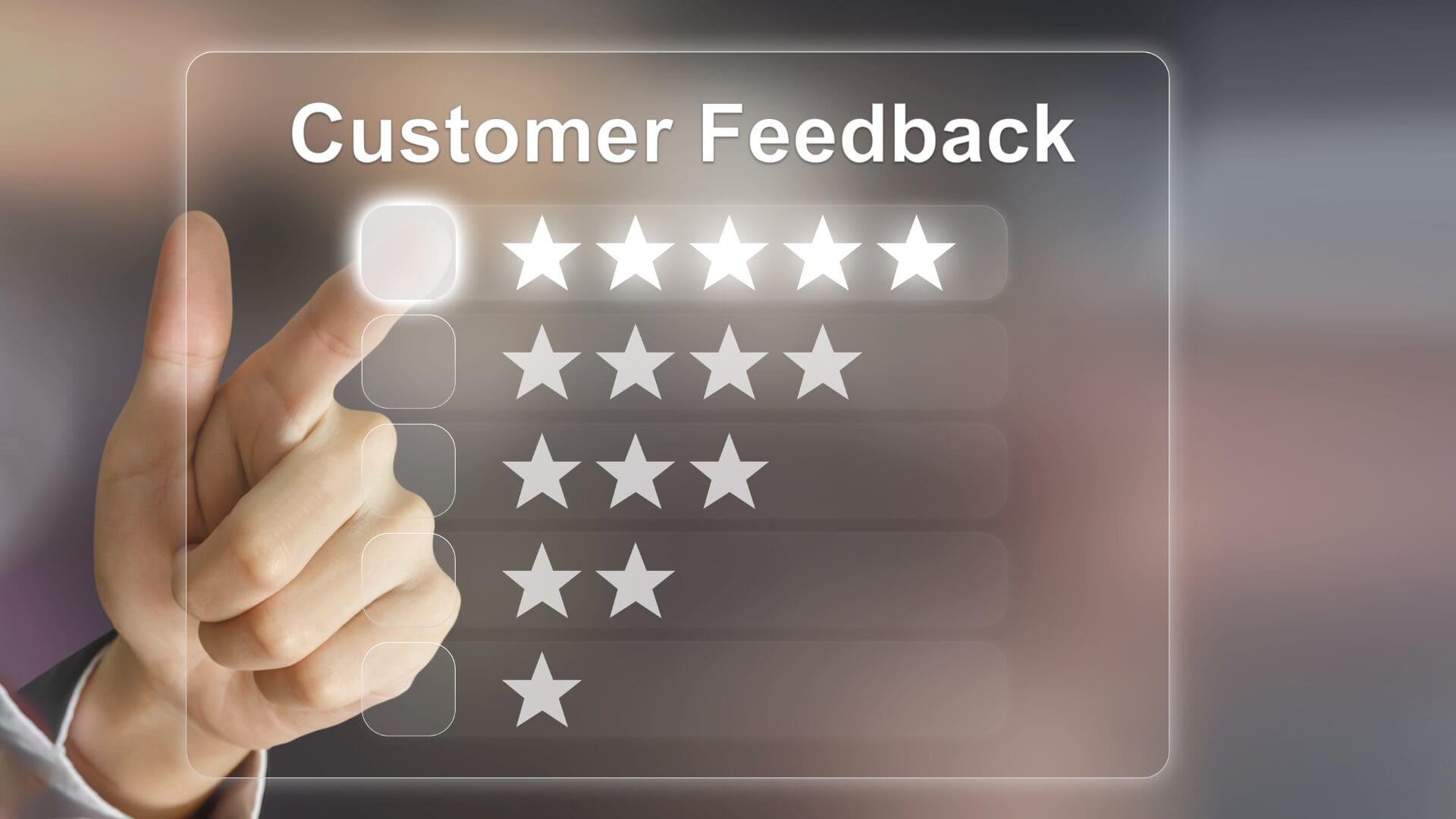With the increasingly competitive business landscape of these modern times, consumers are constantly presented with a wide range of options across a vast directory of product and service providers, all capable of meeting customers’ sought requirements.
With this array of choices, what factor becomes essential in making your business stand out amongst its competitors?
To give a simple answer, it all comes down to getting personal. imail comms shows you how in this blog.

Clients nowadays are enticed by personalised experiences rather than a simple business-client transactional relationship. Companies that can provide a genuine and relatable customer experience solidify their market position as business leaders and consistently turn potential customers into loyal clients.
Businesses that tend to neglect or underestimate the significance of a highly-individualised customer journey rarely realise their full potential and are often confronted with reduced customer satisfaction.
This is where the importance of a comprehensive customer communication management strategy is heightened. Effective CCM solutions can make or break a business, driving genuine customer engagement through consistent positive interactions and surpassed customer expectations.
Ready to delve into the key to your business growth?
Customer Communication Management in a Nutshell
CCM is a concept that mainly revolves around customized and effective outbound customer communications. But what does that precisely mean?
Customer Communications Management (CCM) is a strategic approach and set of digital tools aimed at improving how businesses create, send, store and manage outgoing messages to customers. CCM solutions connect with a company’s internal systems to gather consumer data and organise it into a central hub, making communication processes smoother and more convenient for everyone involved.
To simplify it, Customer Communications Management (CCM) is like having a digital assistant for businesses to communicate better with their customers, encompassing all customer information in a single easily accessible focal point for outbound communications.

With a well-designed customer communication management approach, businesses can drastically boost the probability of customer retention and build enduring client relationships. This is especially important for businesses with a large clientele-base and have frequent customer communications as part of their daily operations.
Managing comprehensive customer data and personalising each customer’s journey can be an overwhelming and time-consuming process, which can be appropriately addressed if your business implements an optimised customer communication management system.
Outbound Customer Communication Fundamentals
Before we dig deep into customer communication management strategies, it is crucial to fully comprehend the concept of outbound customer communication. At its core, outbound communication revolves around customer engagement in the following forms:
Live Customer Interactions
Live interactions in outbound client communications involve real-time engagement between a business representative and a customer. These interactions commonly occur through channels such as:
- Phone calls
- Live chat and messaging
- In-person interactions

One of the primary advantages of live interactions is their immediacy. Clients who actively seek and discover swift and effective solutions to their pain points are more inclined to stay with a product/service provider over time. Additionally, live interactions allow for personalised communication, as representatives can tailor their responses to address the specific needs and concerns of specific customers in real-time.
Keep those customers coming and invest in a support team that can be available around the clock. Keep in mind that customers spend considerable and irregular hours online. A business that mirrors this accessibility is automatically catapulted to the forefront of consumer preference.
Digital Interactions
Unlike live interactions that typically involve real-time communication with customer service representatives, digital interactions are asynchronous and can occur at any time. Digital interactions refer to the use of different channels to engage with customers such as:
- Website
- Social Media channels
- Social Media posts
- Community forums
- Mobile applications
One of the key advantages of digital interactions is their scalability. Businesses can use digital channels to communicate with a large number of customers simultaneously, reaching a broader audience without requiring significant additional resources.
For example, an email campaign can be sent to thousands of subscribers with just a few clicks, making it an efficient way to disseminate information or promotional offers.
Digital interactions also offer flexibility in terms of timing and accessibility. Customers can engage with a digital communication channel at their convenience, whether they’re checking emails on their lunch break or sending a message on social media while waiting for the bus. This flexibility accommodates varying schedules and time zones, ensuring that businesses can connect with customers whenever they’re most likely to be receptive.
How is CCM Customer Data Generated?
Establishing a reliable automated customer communication system, particularly in the realm of Customer Communications Management (CCM), essentially requires the foundational establishment of a comprehensive in-depth knowledge base.
Vital information and intricate data are drawn from disparate systems with collaborative internal communication across multiple channels. The collected information is assembled and diverted to one central location, allowing all parties involved to gain valuable customer insights and share knowledge seamlessly. This ultimately serves the best interests of the business, its existing clients and future prospective customers.
Eliminating miscommunications and reducing the risk of errors, this automated customer communication creates a customer experience that will undoubtedly place you in the top-tier of business leaders.
So where does this data essentially come from?
- Customer data is sourced from a customer relationship management (CRM) system.
- Financial information is gathered from an enterprise resource planning (ERP) system.
- Legal terms and conditions are assessed and accessed by the legal system.
- Brand assets are managed through a digital asset management platform (DAM).
- Marketing materials are crafted using a marketing platform overseen by a marketing team.
- Feedback, reviews and complaints are derived from information provided by a customer service team.
Customer Communications Management (CCM) Trends
Customer Communications Management (CCM) trends offer invaluable insights into the evolving needs and preferences of both businesses and consumers. From embracing cloud-based solutions to harnessing the power of conversational AI, let’s delve into the key trends shaping the future of CCM.
Cloud-Based CCM: Unleashing the Power of Scalability and Flexibility
Picture a dynamic ecosystem where communication processes are seamlessly orchestrated, accessible from anywhere, at any time. Cloud-based CCM solutions epitomize this vision, offering unparalleled scalability and flexibility.
By migrating communication infrastructure to the cloud, your business can transcend geographical boundaries, facilitate operations and enhance collaboration. This trend not only reduces reliance on on-premises hardware but also empowers you to adapt swiftly to changing market dynamics and customer demands.
Content Revision and Delivery: Ensuring Relevance in an Era of Information Overload
In an era inundated with content, cutting through the noise and delivering relevant messages is paramount. Content revision and delivery mechanisms within CCM systems enable your business to fine-tune messaging for maximum impact.
Whether utilised for tailoring content based on demographic insights or optimising delivery channels for specific audience segments, this trend emphasizes the importance of precision and relevance.
By leveraging advanced analytics and automation tools, you can ensure that each communication resonates with its intended audience, driving customer engagement and crafting a unique customer journey.
Content Analytics: Unlocking Insights for a Successful Customer Communication Strategy
In the age of data-driven decision-making, content analytics emerges as a game-changer for CCM strategies. By harnessing the power of data analytics tools, you can gain valuable insights into your customer behaviours, preferences and engagement patterns.
From tracking a customer’s order history, open rates and click-through rates to analysing sentiment and engagement metrics, content analytics provides a comprehensive view of communication effectiveness.
Armed with these insights, you can fine-tune your business’ content strategies, optimise messaging and drive meaningful interactions with your audience

Conversational Artificial Intelligence (AI): Elevating Customer Interactions to New Heights
Imagine having a virtual assistant capable of engaging customers in natural, human-like conversations, round the clock. Conversational AI represents a paradigm shift in customer interactions, offering personalized and proactive support across various touchpoints.
From chatbots and virtual assistants to voice-enabled interfaces, this trend revolutionises how your business engages with its audience. By leveraging conversational AI, organisations can deliver harmonised personalised experiences, resolve queries in real-time and drive your clients’ contentedness to unprecedented levels.
The 5 Pillars of Any Successful Customer Communication Management Strategy
Regardless of the Customer Communication Management (CCM) trend your business opts for, certain fundamental principles should underpin any CCM system. These pillars are crucial for building a solid foundation essential for the effective implementation of your CCM strategy and the maximal realisation of its benefits.
A Comprehensive Centralised Platform
In the domain of customer communication management (CCM), a centralised platform serves as the cornerstone for orchestrating facilitated interactions.
Imagine a hub where all communication channels converge, enabling you to manage emails, SMS, social media and print materials from a single interface. This centralised approach not only simplifies administrative tasks but also enhances consistency and compliance. By consolidating diverse systems into one, your organisation can gain a holistic view of customer interactions, leading to more personalised and effective communication strategies.
Automated Document Factory
The automated document factory represents the engine driving efficiency within a CCM system.
Instead of manually generating interactive documents such as invoices, statements or contracts, automation technologies streamline the process from creation to delivery. Templates and rules-based engines enable swift document generation, while integration with customer data ensures accuracy and relevance. By automating routine tasks, you can minimise errors, reduce operational costs and accelerate time-to-market.
Business Process Automation
Business process automation (BPA) extends beyond document generation to encompass end-to-end workflows within a CCM system.
From customer onboarding to service inquiries, BPA automates repetitive tasks, freeing up resources for more strategic activities. Workflows can be customised to match your specific business requirements, ensuring agility, scalability and reduced response time.
Omnichannel Management
In today’s interconnected world, customers expect harmonious experiences across all channels, which can be realised by an appropriate omnichannel delivery.
Omnichannel management within a CCM system ensures consistency and coherence, regardless of whether a customer interacts via email, mobile app or in-person. By synchronising messaging and branding across channels, you can create a unified and immersive experience for your audience. It is also worth considering assigning a marketing rep or account manager for unified and comprehensive management across the channels in question.
Crafting a Personalised Tone
Effective customer communication goes beyond mere information exchange; it resonates on a personal level, forging emotional connections with your audience.
Crafting a well-written, creative tone infuses communication with warmth, empathy and authenticity. Whether it’s addressing a service issue or promoting a new product, messages should reflect the brand’s personality and values while speaking directly to your customer’s needs and aspirations.
11 Tips to Boost Your CCM Strategy
Now that we’ve broken down the trends, let’s see what you can do to maximise your CCM potential.
1. Customer Segmentation: Personalise Your Outreach for Maximum Impact
Imagine tailoring your customer communication strategy to fit each customer like a bespoke suit.
Customer segmentation allows you to do just that.
By categorisiing your audience into distinct groups based on demographics, behaviors or preferences, you can deliver targeted messages that resonate deeply with each segment. Not only does this customer segmentation increase relevance, but it also boosts engagement and satisfaction around customer experience, fostering stronger connections with your customers.
2. Dedicated Customer Service & Success Managers: Your How to Guides to Success
In a world where automated responses often dominate, having dedicated support agents or success managers can make all the difference.
These individuals serve as your customers’ trusted advisors, providing personalised support and guidance tailored to their unique needs. By assigning a dedicated point of contact to each customer, you can cultivate deeper customer relationships, drive loyalty and ensure a superior customer experience that sets your brand apart.
3. Omnichannel Communication Approach: Consistent Messaging Across All Channels
In today’s interconnected world, customers expect a simplified personal experience across all communication channels. An omnichannel communication approach ensures consistency and coherence, allowing you to deliver a unified brand experience across multiple communication channels, all stemming from one central location.
By synchronizing messaging and branding across channels and based on customer segmentation—from email to social media to in-person interactions—you can enhance engagement, build loyalty and drive business growth. On the other hand, weak omnichannel strategies can cause frustration and make customers feel overwhelmed.
4. Invest in Live Chat Tools: Deliver Real-Time Support at Your Customers’ Fingertips
Imagine having a friendly support agent available 24/7 to address your existing customers’ inquiries and concerns in real-time and across multiple channels. That’s the power of live chat tools.
By investing in live chat technology, you can offer immediate assistance, reducing average resolution time and improving overall satisfaction levels. Whether it’s answering product questions, troubleshooting issues or providing technical support, live chat tools enable you to meet customers in their preferred times and deliver exceptional interactions that keep your customers happy and coming back for more.
5. Have a Customer Communication Plan in Place: Set Clear Objectives and Strategies
Effective communication doesn’t happen by chance—it requires careful planning and execution. Having a comprehensive customer communication plan in place ensures that your efforts are aligned with your business objectives and your customer’s preferences.
This plan should outline key messaging themes, the top communication channel customers prefer and metrics for success, providing a roadmap for engaging with your audience across all preferred channels.
6. Create an Internal Communication Plan: Align Your Team for Success
Just as important as communicating with your customers is ensuring that your internal team is on the same page. An internal communication plan outlines how information flows within your organisation, ensuring that everyone is informed, engaged and aligned with your customer communication strategy.
7. Implement Self-Service Support Channels: Empower Customers to Help Themselves
Empowerment is key in today’s self-service-oriented world. By implementing self-service options such as knowledge bases, FAQs and online forums, you can empower your customers to find answers to their questions and complete simple tasks independently.
This self service education not only reduces support costs but also enhances customer satisfaction by providing quick and convenient solutions to common issues. Furthermore, it frees up your support team to focus on more complex inquiries, improving overall efficiency and time management.
8. Measure & Monitor Customer Communication Metrics: Track Your Progress and Performance
In the realm of customer communication, data is your best friend. By measuring and monitoring key metrics such as response times, satisfaction scores and engagement rates, you can gain valuable insights into the effectiveness of your communication efforts.
This data-driven approach enables continuous improvement, allowing you to refine your strategies and better meet customer needs over time. Plus, it provides tangible evidence of the impact of your CCM strategy, helping you secure buy-in and support from stakeholders.
9. Regularly Ask for Customer Feedback: Listen and Learn from Your Audience
Your customers are a wealth of valuable insights gained. Regularly soliciting feedback through surveys, feedback forms or social media allows you to understand their needs, preferences and primary concerns better.

By actively listening to customer feedback and incorporating it into your communication strategy, you can demonstrate that you value their input and are committed to continuous improvement. Plus, it helps you identify areas for growth and innovation, ensuring that your CCM strategies remain consistent and effective in a constantly evolving landscape.
10. Build Knowledge Bases for Self-Learning: Empower Your Team with Information
Knowledge is power, especially when it comes to customer communication. By building comprehensive knowledge bases for your team, you ensure that frontline staff have the information they need to address customer inquiries proficiently.
11. Be Proactive, Not Reactive: Anticipate and Address Customer Needs
In the fast-paced world of customer communication, being proactive is essential. Instead of waiting for issues to arise, anticipate customer needs and preempt potential problems before they escalate.
Whether it’s sending proactive notifications about service outages or reaching out to offer assistance before a customer asks, proactive communication builds trust, loyalty and goodwill. By staying one step ahead of your customers’ needs, you can ensure that their experience with your brand is always positive and memorable.
Customer Communication Management: Simplified Software
Turn to imail comms for improved communication management with your customers.
Our service has shown a 30% improvement in customer engagement, making communication more effective and impactful.
Our simplified software is easy to understand and is bound to yield results, making life easier and keeping your customers satisfied.
We transform conversations.
Frequently Asked Questions (FAQs)
Let’s find out what people want to know about customer communication management.
What is CCM vs CRM?
CRM and CCM share a close relationship as they both revolve around managing communications between an organisation and its existing and prospective customers. While CRM emphasises analysing customer data to enhance customer retention and boost sales, CCM facilitates customer interactions through various tools and processes.
What are the different types of customer communication means?
Nowadays, businesses can communicate with their clients through several communication means, including but not limited to:
- Website
- Phone Calls
- Social Media
- Text Messaging
- Live Chat
- Letters and Hand-Written Notes
- Video Messaging
What is a CCM system?
CCM software serves as a vital tool for companies seeking effective communication channels with their customer base. Originally, customer communications primarily revolved around tangible printed documents, archived digital materials, and electronic mail correspondences. As technology has advanced, CCM solutions have evolved to encompass a wider array of communication mediums, including but not limited to SMS, social media messaging, personalised web portals, and interactive voice response systems.
Related: How To Choose The Best CCM Software?






Leave A Comment
You must be logged in to post a comment.